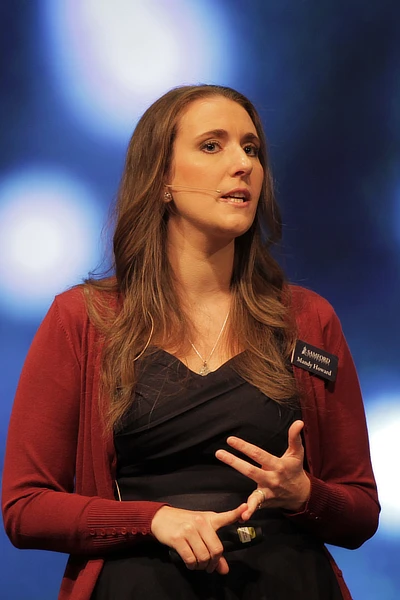
Have you ever wondered whether every member of your congregation truly feels at ease during worship? You might be surprised to learn that up to 20% of people experience what’s known as “sensory sensitivity.”
Understanding Sensory Sensitivity
Imagine if the volume of life was turned up to 11 all the time. That’s kind of what it’s like for people with sensory sensitivity. They experience the world more intensely – sounds might seem louder, lights brighter, and crowds more overwhelming. It’s not just about the five senses either; emotions and/or social interactions can feel more intense, too.
The Importance of Inclusivity in Worship
In 1 Corinthians 12:12-27, Paul beautifully illustrates the diversity and unity of the body of Christ:
“For just as the body is one and has many members, and all the members of the body, though many, are one body, so it is with Christ. For in one Spirit we were all baptized into one body—Jews or Greeks, slaves or free—and all were made to drink of one Spirit. For the body does not consist of one member but of many. If the foot should say, “Because I am not a hand, I do not belong to the body,” that would not make it any less a part of the body. And if the ear should say, “Because I am not an eye, I do not belong to the body,” that would not make it any less a part of the body.”
– 1 Corinthians 12:12-27 ESV
This passage underscores a crucial truth: Every member of our church family, including those with sensory sensitivities, plays a vital role in our community. Furthermore, individuals with sensory sensitivities often possess remarkable qualities and unique gifts that can deeply benefit our church communities such as:
- Heightened Empathy: They’re often great at understanding how others feel.
- Deep Appreciation for Beauty and Meaning: They notice the little things that make worship special.
- Reflective and Thoughtful Nature: They often have profound insights about faith.
- Commitment to Authenticity: They value genuine expressions of faith.
Challenges Faced in Traditional Worship Settings
While these individuals bring invaluable strengths, it’s essential to recognize the challenges they may encounter during typical worship services:
- Sensory Overload: Loud music or bright lights can be overwhelming.
- Social Navigation: Large group interactions are challenging.
- Emotional Intensity: The intense emotions of worship can be exhausting.
- Sensitivity to Change: Transitions between different parts of the service can be jarring.
Bridging the Gap: A Research-Based Approach
Recognizing the need for practical guidance in this area, we conducted a research study to better understand the challenges and coping strategies of individuals with sensory sensitivity in worship settings. Our study, which involved over 1,200 people with sensory sensitivity (and their families) and more than 100 ministry leaders, led to the development of a resource guide: “Worship Without Limits: Practical Guidance for Shepherding People with Sensory Sensitivity.”
Seven Strategies for Inclusive Worship
Based on our research findings, we’ve identified seven key strategies to create a more accommodating worship environment:
- Create a Sensory-Friendly Space: Small adjustments to the worship environment can go a long way.
- Provide Self-Regulation Opportunities: Empower individuals to manage sensory overload by providing tools and practices for self-regulation.
- Create an Understanding Community: Create a supportive community where individuals feel connected.
- Offer Flexible Worship Options: Adjust routines and provide alternatives options.
- Provide Sensory-Friendly Resources: Provide tangible resources and aids.
- Listen and Communicate Openly: Establish open lines of communication.
- Work Together to Meet Unique Needs: Have collaborative conversations to develop a personalized plan.
Each strategy in this resource guide (releasing October 8, 2024) is accompanied by practical tips and actionable steps to help you implement these principles effectively within your worship community.
Taking the First Steps
Creating an inclusive worship space is a journey, not a destination. As you move forward, continually ask yourself: “How can we celebrate the unique gifts of every person in our church family?” Remember, every small step makes a significant difference in creating a place where everyone can connect with God and each other.
Start with small, manageable steps:
- This week, you might set up a quiet corner in your sanctuary.
- Next month, you could conduct a training session for your greeters about sensory sensitivity.
- In the coming months, consider setting up a sensory sensitivity support group.
Embracing the Vision of Inclusive Worship
At its core, facilitating sensory-inclusive worship experiences is a discipleship issue that aligns with the biblical call to embrace all members of the body of Christ. By opening our hearts, minds, and church doors wider, we create worship spaces where everyone – yes, everyone – has the opportunity to fully experience God’s love.
We invite you to register to join us on Tuesday, October 8 from 9:00 – 10:30 AM at Samford in the Regions Room for free breakfast & the release of this exciting new resource from Samford psychology professor Dr. Amanda Howard entitled “Worship Without Limits: Practical guidance for ministry leaders shepherding individuals with sensory sensitivity.”
This resource guide and workshop were made possible through a Vital Worship, Vital Preaching Grant by the Calvin Institute of Christian Worship in Grand Rapids, Michigan, with funds provided by Lilly Endowment, Inc.

Dr. Amanda Howard specializes in developmental science, action research, and social psychology. Her scholarly work focuses on understanding the effects of adversity on vulnerable children and their families and improving the quality of practice being provided by the communities, organizations, and governments that serve them. Her most recent research includes a multi-national study that examines the factors leading to resilience in adults who spent time in alternative care during childhood (i.e. foster care, orphanages, etc.). Amanda is deeply committed to translating research to on-the-ground practice and has done extensive speaking about care reform and improving public policy both nationally and internationally. She is also the Senior Scholar for the Christian Alliance for Orphans, where she helps support faith-based organizations in providing the best care for at-risk children around the world. Amanda also enjoys camping and hiking with her husband, John, and their sons, Elias and Silas.
